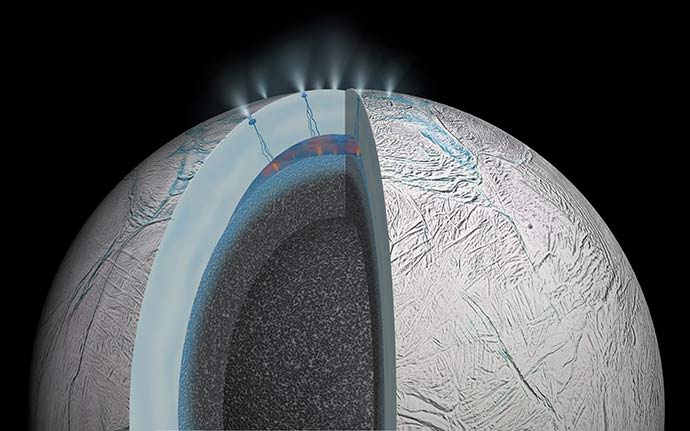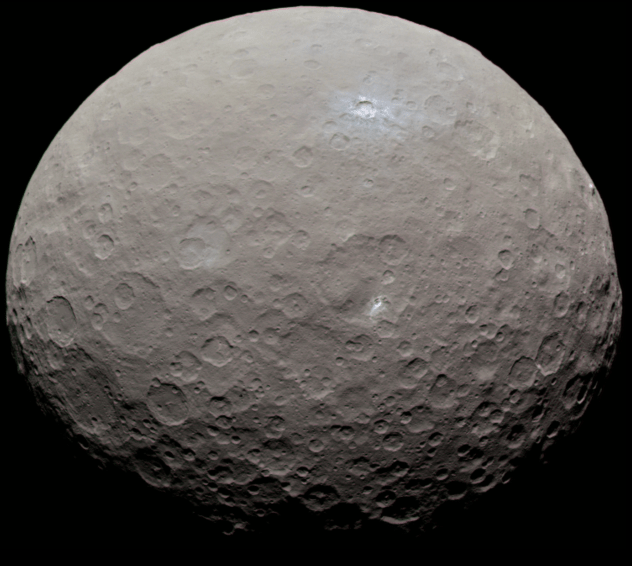
Continue reading

Located in the southern Virgo constellation, roughly 60 million light-years from Earth, is the spiral galaxy known as Messier 59
Continue reading

Using a combined technique, a team of international astronomers have spotted a galaxy 11 billion light years away, making it the oldest spiral galaxy yet studied.
Continue reading

PORT CANAVERAL/KENNEDY SPACE CENTER, FL - 'The SpaceX boosters back in town! The boosters back in town!' paraphrasing the popular lyrics of the hit single from Irish hard rock band Thin Lizzy - its what comes to mind with the speedy cadence of 'launch, land and relaunch' firmly established by CEO Elon Musk's hard rocking crew of mostly youthful rocket scientists and engineers.
Continue reading

Continue reading

NASA recently unveiled their SELFI instrument, which will search Enceladus' plumes to look for signs of life in the interior
Continue reading

A new study by a team of NASA scientists has shown how searching for biosignatures known as atmospheric beacons could aid in the search for Extra-Terrestrial life!
Continue reading

Continue reading

KENNEDY SPACE CENTER, FL - With the stunningly beautiful Halloween eve liftoff of the commercial KoreaSat-5A telecomsat payload from the Florida Space Coast, SpaceX matched competitor United Launch Alliance's (ULA) single year launch record of 16 missions – and the blastoff record breaker is on tap in just 2 weeks time!
Continue reading

A new method devised by a team of Chinese and US researchers could lead to accurate estimates on the masses of supermassive black holes.
Continue reading

Continue reading

The discovery of a Jupiter-sized planet around a red dwarf star has caused astronomers to rethink some of their theories on planet formation.
Continue reading

Using data from the Juno probe and X-ray observatories. an international team of astronomers noticed that auroras on Jupiter operate independently of each other.
Continue reading

Using data from the SuperWASP survey, an international team of astronomers has identified two new "hot Saturns" and one "Super-Neptune".
Continue reading

KENNEDY SPACE CENTER, FL - SpaceX delivered a spectacular Halloween eve delight with today's Falcon 9 launch of a Korean HDTV satellite that lit up the Florida Space Coast skies with a glow that delighted kids of all ages and ghouls alike and put an end at last for today to the atrocious wet and windy weather afflicting the Spaceport region.
Continue reading

A new study by an international team of scientists has indicated how a different form of water transport called "levitation" could have shaped the surface of Mars.
Continue reading

Continue reading

Thanks to the efforts of a team of professional and amateur astronomers, the first extra-solar comets have been observed.
Continue reading

KENNEDY SPACE CENTER, FL - After seemingly endless bouts of damaging rain squalls and flooding, Florida is at last living up to its billing as the 'Sunshine State' with some superb weather forecast for Monday afternoon's scheduled liftoff of a SpaceX Falcon 9 with its first Korean customer – on the eve of Halloween.
Continue reading

Two new studies produced by the Dawn mission team have shown that the protoplanet may have once had an ocean, the remnants of which are likely in its interior today.
Continue reading




















